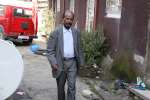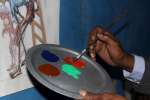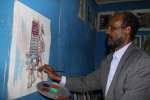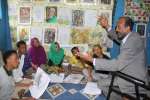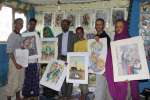- Text size
 |
|  |
|  |
| 
- Français
UNHCR provides tents, emergency relief items to Cyclone Chapala displaced in Yemen
Briefing Notes, 6 November 2015
This is a summary of what was said by UNHCR spokesperson Andreas Needham – to whom quoted text may be attributed – at the press briefing, on 6 November 2015, at the Palais des Nations in Geneva.
Tropical Cyclone Chapala made landfall on 3 November in Hadramaut governorate before moving into Shabwah along the Arabian Sea coast of Yemen. Strong winds, heavy rains and flooding has destroyed house, boats and livestock, and disrupted services. Early reports indicate that around 1,600 families have been displaced in Hadramaut, some 150 in Shabwah, 25 in Al Maharah, and hundreds more on Socotra.
A day before landfall, UNHCR moved 3,000 NFI kits and 1,000 tents to Al Mukalla in Hadramaut, and UNHCR partners began distribution on 4 November. An initial 350 families were reached in Hadramaut and distributions are ongoing in affected areas. UNHCR is also bringing in 5,000 emergency shelter kits to Al Mukalla. Throughout the preparations and response, UNHCR has been coordinating with authorities, other UN agencies, NGOs, civil society organisations and through the sub-national Protection and Shelter Clusters in Aden.
The effects of Chapala have been most severe in Shabwah and Hadramaut, with a combined population of about 1.9 million people. Jilaa, a village of around 1,150 persons in Shabwah governorate was completely washed away and further reports are coming in of devastation. Seventy six per cent (1.4 million) of the population in these governorates were already in need of humanitarian assistance, which includes over 100,000 displaced people and over 27,000 refugees and migrants.
In advance of the cyclone, The Yemeni island of Socotra situated 350km from the mainland in the Arabian Sea, also experienced widespread destruction and displacement, with many taking shelter in caves, schools, or in the homes of relatives. At least 170 houses on the island were fully damaged and a further 610 partially damaged.
UNHCR in Yemen had been in contact with colleagues in Somaliland and Puntland to dissuade refugees, asylum-seekers, and migrants – primarily from Ethiopia and Somalia,- from taking boats to Yemen due to the dangerous conditions at sea as a result of Chapala,. There have been no reported new arrivals since 1 November. Thus far in 2015 UNHCR has counted nearly 70,000 new arrivals along the Red and Arabian Sea coasts. Over 11,000 arrived in October along the Arabian Sea coast and received reception and medical services from UNHCR's Mayfa'a reception centre in Shabwah, which so far weathered well through the storm with only minor damage to the premises.
We have been informed that a new tropical storm is on its way and may develop in a second cyclone, to reach Socotra on Sunday 8 November. UNHCR and other humanitarian agencies are further scaling up their preparedness and response measures. Colleagues in Somalia have once again issued warnings to would-be crossers through partner and community networks.
Over the last several months arrivals had shifted primarily to the Arabian Sea coast to avoid intense conflict areas centred in Taizz governorate situated on the Red Sea coast of Yemen. Yemen has 21.1 million persons in need of some form of humanitarian assistance, including access to food, health care and safe drinking water, and over 2.3 million internally displaced persons stemming from the escalation of the conflict since late March of this year.
For more information on this topic, please contact:
- Teddy Leposky on mobile +962 79 866 0268
- Andreas Needham in Geneva, on mobile +41 79 217 3140













